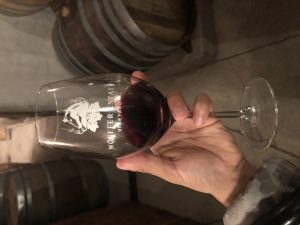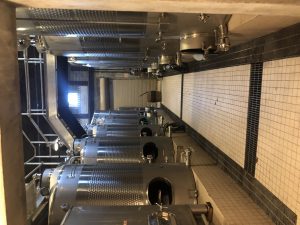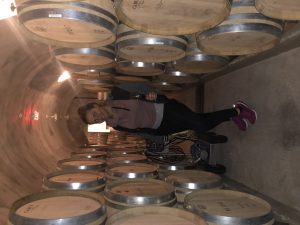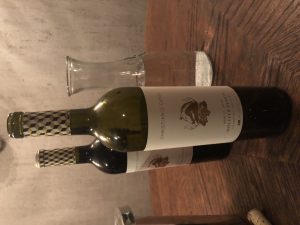As an hospitality industry professional it is very important to understand the importance of wine beverage management. Coming from a background that did not include wine consumption at all, the “Wine and Beverage Management” introductory course has piqued my interest spontaneously.
As a way to further experience step by step the making of wine, I decided to visit a vineyard who is “committed to producing premium, distinctive wines, ciders and spirits through a dedication to quality, penchant for style and celebration of place.” Although it was a long trip, this experience provided lots of information which was enhance due to the file of knowledge that has been built in the course.
Wölffer Estate Vineyard was founded in 1987 in the heart of Hampton, Long Island by Christian Wölffer who’s heart was captured by the world of wine. The vineyard has been known for its sustainable wines.
The vineyard is located in the South Fork of Long Island, very closed to the coast (North Atlantic Ocean). According to “Long Island Sustainable Wine Growing”, the organization states that “…its depth, good drainage and moderate to high available water-holding capacity that make this soil well-suited to farming.” Due to the large bodies of water, the temperature is able to moderate the temperature within the soils and environment as a whole.
The vines at Wölffer Estate Vineyard are approximately 30 years old which allows the grape vines to be matured. They have 25 acres of Chardonnay, 14 acres of Merlot, 6 acres of Pinot Noir, 1/2 acre of Trebbiano, and a bit high of Vignole. According to”In the Wine Country of Long Island a Rising Star: Merlot”, Florence Fabricant stated that “Merlot is attracting a lot of attention because it seems to be emerging as the best red grape for this area.” This is proven due to the fact that Wölffer widest red grape variety grown is Merlot.
During this experience I had the privilege of having a tour with the Sommelier, Pamela, who has worked at Wölffer since 2007. While describing the canopy practices, Pamela was well descriptive with the history of wine as an overall concept. She described the causes as to how phylloxera was spread throughout the world (practically) and why it led to grafting the vitis labrusca and vitis vinifera.
Some of the viticultural practices that they take is manipulating their grape vine from having 18 canes to only 2 (sometimes 4). They also drop about 1/3 of the leaves to allow enough heat and sunlight to ripen the grapes. They drop fruits to increase quality of the grapevines occasionally. During the wine production, they hand pick their grapes and destemmer. Their wine age on an average of 18 months on oak barrels (red) and vessels for (white). Pamela explained that they punch the must and skins during fermentation to allow both to have contact.
During the testing, we tried a white, rose and and 2 red wines (one was fuller than the other). The white wine was a chardonnay had notes or the core of a pineapple, lemon zest and tart unripened pear; it had a medium acidic level.It pared well with a Shrimp cocktail. The rose, honestly was not one of my favorites as it was extremely light. It was a blend of chardonnay, merlot and pinot noir (was very dry on palate). Both of the reds were very similar. One was a pinot noir and the other was merlot. Although completely different grapes, it felt as if I were drinking the same wine. Both contained notes of plums, blackberries, and a bit of apricot. The Merlot paired well with mushroom truffle.
Wölffer sells their wine internationally to Germany, Denmark, and Sweden. A fun fact to know if that their labels are named after each of the horses that Christopher once owned. I am very excited to perhaps visit the vineyard again when the grapes start to grow.
Citations:
Fabricant, F. (1990, August 22). In the Wine Country of Long Island, a Rising Star: Merlot. Retrieved April 30, 2019, from https://www.nytimes.com/1990/08/22/garden/in-the-wine-country-of-long-island-a-rising-star-merlot.html
Our Soil. (n.d.). Retrieved April 30, 2019, from http://www.lisustainablewine.org/our-soil








I like your tasting notes. Here is a podcast the owner of the winery did with CheeryBombe. I hope you have a chance to listen. https://podcasts.apple.com/us/podcast/radio-cherry-bombe/id876424161?i=1000434250777